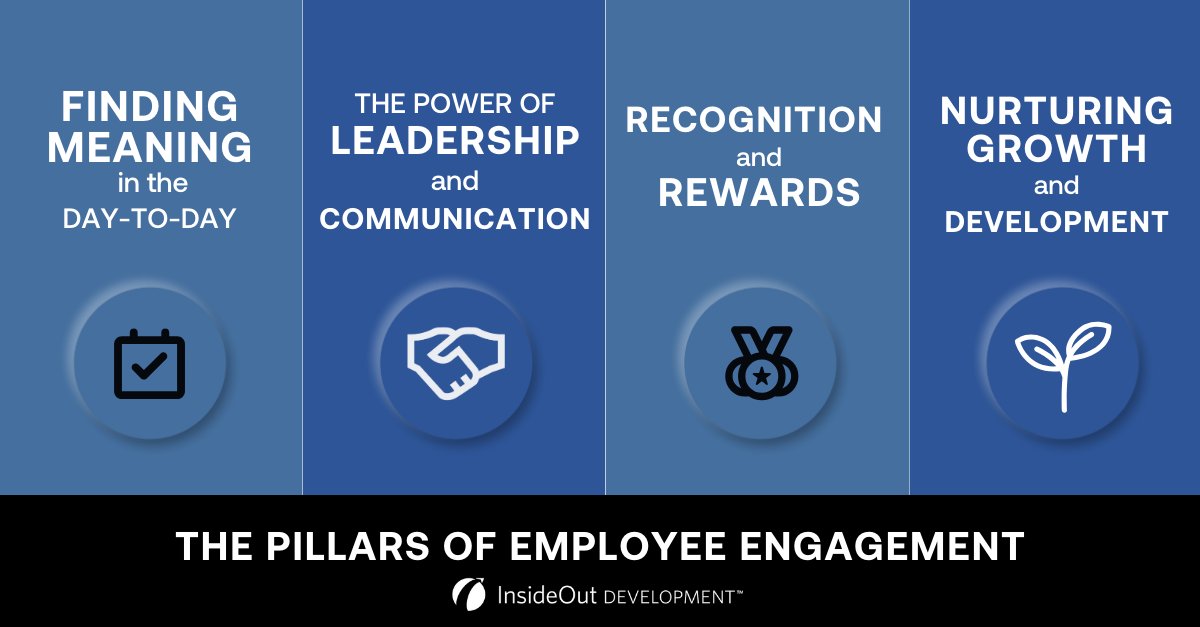You may be asking yourself: How does employee engagement affect performance?
We understand this question may be an intimidating one to unpack on your own. That’s why we’re here to break it down for you — in simpler terms. But, before we kick start the conversation, let’s define employee engagement.
According to Forbes, “Employee engagement is the emotional commitment the employee has to the organization and its goals.” But that begs the question: How exactly does engagement tie into performance? Here's the scoop.
When employee engagement skyrockets, guess what follows? Yes, you got it. The organization's success gets a major boost as well.
With that said, in this article, we’re going to unpack how job satisfaction affects employee performance and beyond. Let's jump in.
The Connection Between Employee Engagement and Performance
Now that we've set the stage, let's dissect the heart of the matter: the intriguing interplay between engagement and performance. We'll break down the essential elements that weave these two concepts together and uncover how they harmonize to create an orchestra of success.
The Pillars of Employee Engagement

According to a new study, 63.3% of companies say retaining employees is harder than hiring. Yes, we were taken aback by that statistic too.
So, how can you enhance employee retention through effective engagement?
Picture employee engagement as a sturdy structure upheld by various pillars. These pillars (or key factors) breathe life into the engagement equation, driving the gears of productivity and achievement. Without one of the essential pillars, engagement and retention crumble.
Pillar 1: Finding Meaning in the Day-to-Day
One pivotal pillar is the pursuit of meaningful work and job satisfaction.
When employees find a sense of purpose in what they do, it's like fuel for a well-oiled machine. Their commitment and enthusiasm become infectious, infusing the entire organization with positive energy.
Pillar 2: The Power of Leadership and Communication
Strong leadership and effective communication serve as another vital pillar.
A skilled leader who fosters open dialogue and transparent communication lays the groundwork for a cohesive and engaged workforce. When employees feel heard and understood, they're more likely to invest their talents in pushing the boundaries of success.
Pillar 3: Nurturing Growth and Development
Opportunities for growth and development form yet another integral pillar.
A workplace that nurtures employees' aspirations, encouraging them to learn and evolve, becomes a breeding ground for engagement. The chance to expand one's skill set and climb the professional ladder not only benefits the individual but also fortifies the organization.
Pillar 4: Recognition and Rewards
Lastly, acknowledging employees' hard work and dedication is like a standing ovation for their efforts. When accomplishments are celebrated and efforts are valued, engagement levels soar, inspiring employees to contribute their best.
How Does Employee Motivation Impact Organizational Performance?
By possessing all four of these pillars, you’re able to retain top talent and skyrocket employee engagement. Employee motivation — what we like to call Fire — creates a ripple effect across performance, yielding a range of positive outcomes such as:
- Increased productivity and efficiency
- Improved quality of work
- Enhanced creativity and innovation
Next, we’re going to uncover the benefits of employee engagement.
Benefits of Employee Engagement on Performance
So, why is employee participation in the performance management process important? Get ready, because here comes the answer — and it's jam-packed with benefits.
.png?width=1200&height=627&name=IOD%20Employee%20Engagement%20Blog%20Graphic%20(1).png)
Better Employee Retention and Diminished Turnover
The magic of engaged employees lies in their commitment. They're not just punching in and out; they're invested in the long haul.
This dedication translates to improved retention rates and a noticeable decrease in turnover. When employees feel connected and valued, they're more likely to stick around for the journey.
Positive Effect on Team Collaboration and Synergy
Engaged employees work cohesively, leveraging their strengths to create a harmony of ideas and effort. This translates to enhanced team collaboration and synergy that propels projects forward, yielding results beyond the sum of individual contributions.
Higher Customer Satisfaction and Loyalty
Did you know that engaged employees lead to higher overall customer satisfaction and loyalty? The enthusiasm of your employees becomes contagious, nurturing a positive rapport that enhances customer relationships and boosts loyalty.
Enhanced Organizational Reputation and Branding
Engaged employees are ambassadors of the organization's values and culture. Their dedication speaks volumes, elevating the organization's reputation and enhancing its branding in the eyes of customers, partners, and competitors alike.
This is great and all, but what does it have to do with you? Do you, as a leader, have a role to play when it comes to employee engagement? Or, can you leave your employees to become “engaged” on their own?
The Role of Leadership in Fostering Employee Engagement
As a leader, your influence wields the power to shape your company's engagement landscape — for better or for worse.
To truly champion your employees, consider these impactful approaches:
- Foster a culture of open and transparent communication
- Empower your team, granting them the autonomy to excel
- Cultivate a habit of offering consistent feedback and recognition -- the GROW® Coaching Model can help you do just that!
- Craft a work environment that thrives on support and camaraderie.
Remember, your leadership sets the tone for the engagement symphony that plays out within your organization.
Measuring and Assessing Employee Engagement
We've explored the perks of employee engagement and the pivotal role leadership plays. But how can you gauge it? Here are the top methods to measure engagement:
- Employee engagement surveys and assessments
- Identifying key engagement indicators
- Using data to make informed decisions and improvements
In the grand scheme of organizational success, measuring engagement allows you to fine-tune performance for optimal outcomes. To learn more, read our blog post about how to track employee performance.
Overcoming Challenges to Employee Engagement
As we traverse the landscape of employee engagement, you may encounter roadblocks that impede progress — what we call interference. But where there are challenges, there are also opportunities to rise above and thrive.
Let's talk about a few common obstacles that impede engagement and performance and the strategies to conquer them.
.png?width=1200&height=627&name=IOD%20Employee%20Engagement%20Blog%20Graphic%20(2).png)
Challenge 1: Lack of Clear Communication
To combat this, you can bolster communication networks by hosting regular meetings, feedback sessions, and one-on-one check-ins to bridge communication gaps.
Challenge 2: Insufficient Opportunities for Growth
At InsideOut Development, we believe that a culture rooted in coaching and continued growth automatically fosters employee engagement. To further the growth of your team, you can offer training sessions, mentorship programs, and opportunities to acquire new skills.
Challenge 3: Inadequate Work-Life Balance
If you show that you prioritize the well-being of your employees, they’ll be more willing to stick around for the long run.
To do this, establish policies that promote a healthy work-life balance. Examples of this may include encouraging remote work, implementing flexible hours, and setting realistic expectations for their workload.
Focus On Your Employees. The Rest Will Follow.
In closing, let's reinforce the notion that you possess the capability to enhance employee engagement.
Every action you take, whether it's fostering transparent communication, creating growth avenues, or promoting work-life equilibrium, contributes to a thriving engagement ecosystem. And it’s in this engagement that you’ll be able to witness performance soar, from diminished turnover to better team collaboration.
As you step forward into the realm of organizational leadership, consider what you’d invest to get closer to your employee engagement — and performance — goals.
Because at the end of the day, it's not just a concept; it's the heartbeat of your organization's potential. If you nurture it, harness it, and watch it flourish, you’ll be able to elevate your organization to new pinnacles of high performance.
Is it the right time to reevaluate your performance review process? Get our free whitepaper for a fresh perspective on improving your reviews using coaching techniques!





